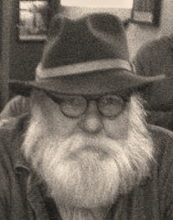I hope you enjoy reading it as much as I enjoyed writing it.
So...here it is....
Dust roiled from beneath the rented Taurus as I hurried down the two rut road at one minute to six in the morning of June 8th, 1993. My appointment was for six, just after sunrise, and I had been forewarned to be on time. The man I was to meet liked people to be on time. He took it as a sign of respect.
I had been working as a freelance writer since graduating from Northwestern five years prior, and my current assignment for National Geographic was to interview a very special (from the magazine's standpoint) African-American man, one Jeremias Jefferson, who lived just outside Trustville, Alabama. I liked the assignment and was eager to do a good job, since from my vantage point, National Geographic was the big time.
I had called various civic leaders to get their input before making my final preparations, but the young white mayor of Trustville, Tom Forbus, had practically insisted that I talk to Jeremias and his wife at their farm on the eighth of June and he had made the arrangements with the couple.
I had also been informed that the couple was deeply religious, therefore I wore my blond hair tied back conservatively; wore a midi skirt down to my calves; stripped off my bright red nail polish and all but the minimum of makeup; donned my most modest earrings; and was careful to wear a blouse that exposed not a millimeter of cleavage,
I slowed the dust spewing vehicle to a crawl as I neared the decrepit house, since an elderly couple sat rocking in wicker chairs on the small sagging porch. The use of the term house may be a misnomer. It was midway between a shack and a cabin, which had, from time to time, been added on a room at a time with varying degrees of success in the art of carpentry. The roof was rusted tin, which, from the buckles and raised nails, surely leaked. There was an outhouse off to the side, far enough from the living quarters so the smell would not disturb the inhabitants.
The old man was smaller than average sized, thin, with short white hair visible below his frayed floppy felt hat. He wore faded bib overalls that had been darned numerous times. Only one of the shoulder straps was functional. He wore tan ankle high brogan-style unbuffed boots, that looked at least two decades old.
Within arm's reach beside him sat a woman that I assumed to be his wife. She knitted as she rocked in an identical chair. The contrast between the couple was great. She was a very large woman who looked like she had been squeezed between the arms of her rocking chair. She wore a cotton dress with a faded floral design. Her shoes were a feminine style of the same glossless boot her husband wore. Hers came below the ankle, but both looked hand crafted, but with tight stitched care and a concern for detail. Her hair, which she wore on the back of her head, still had a few strands of color.
They stared at me as I got out of the rental car and removed my equipment bags from the trunk. The old woman never stopped her knitting, her needles clicking in a blur. He poised the blade of his knife with which he had been whittling, in order to cock his head in scrutiny of me.
When I got to the bottom of the three steps that led to the porch, I stopped and said, “Good morning. I’m Rachel Gotthelf and you must be Jeremiah and Esther Jefferson.”
I gave them my most disarming smile and added, "How are you today?"
"I ain't never been better a day of my life," he said as he resumed his whittling.
His tone indicated the truth of the statement.

No comments:
Post a Comment